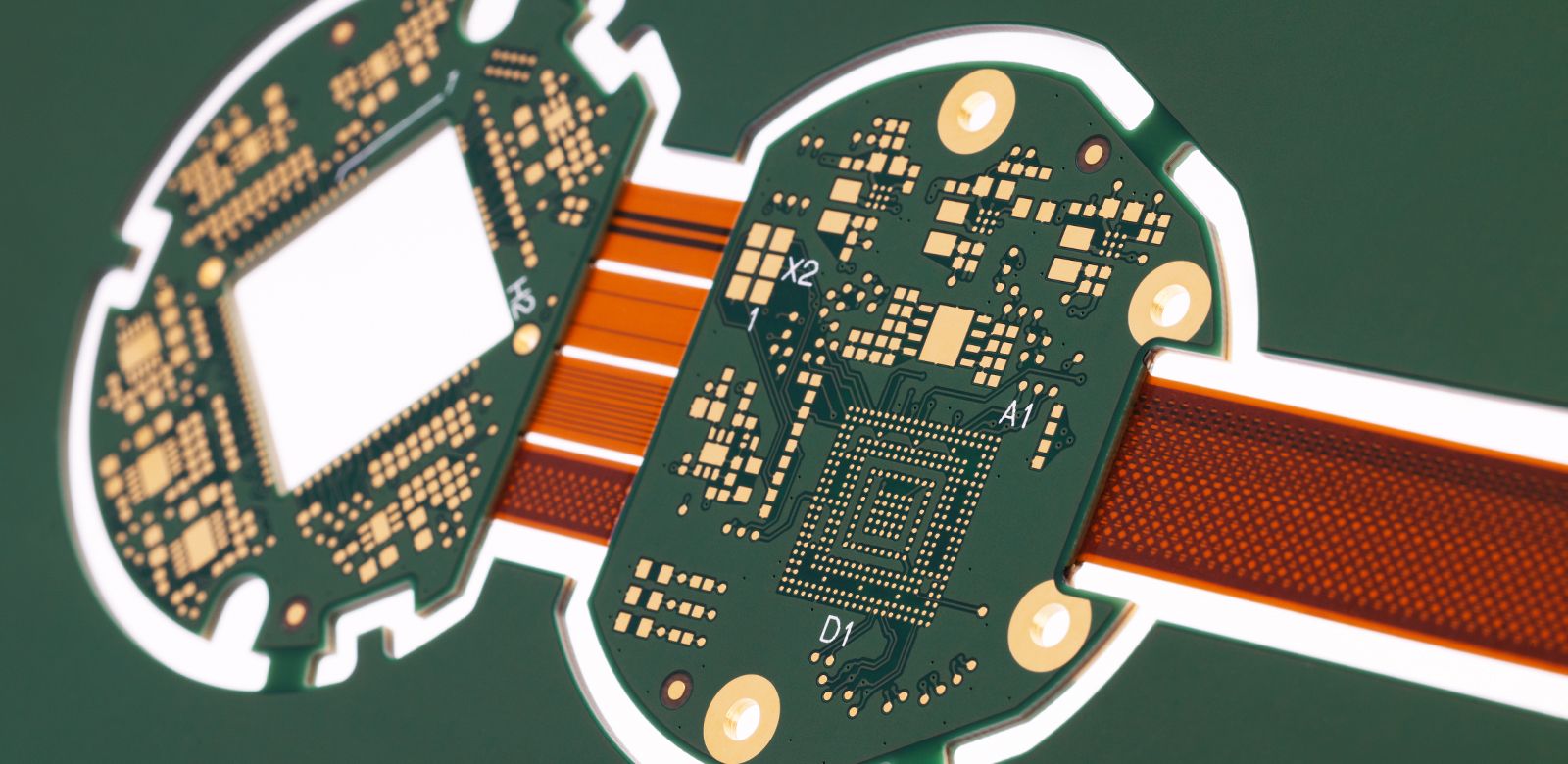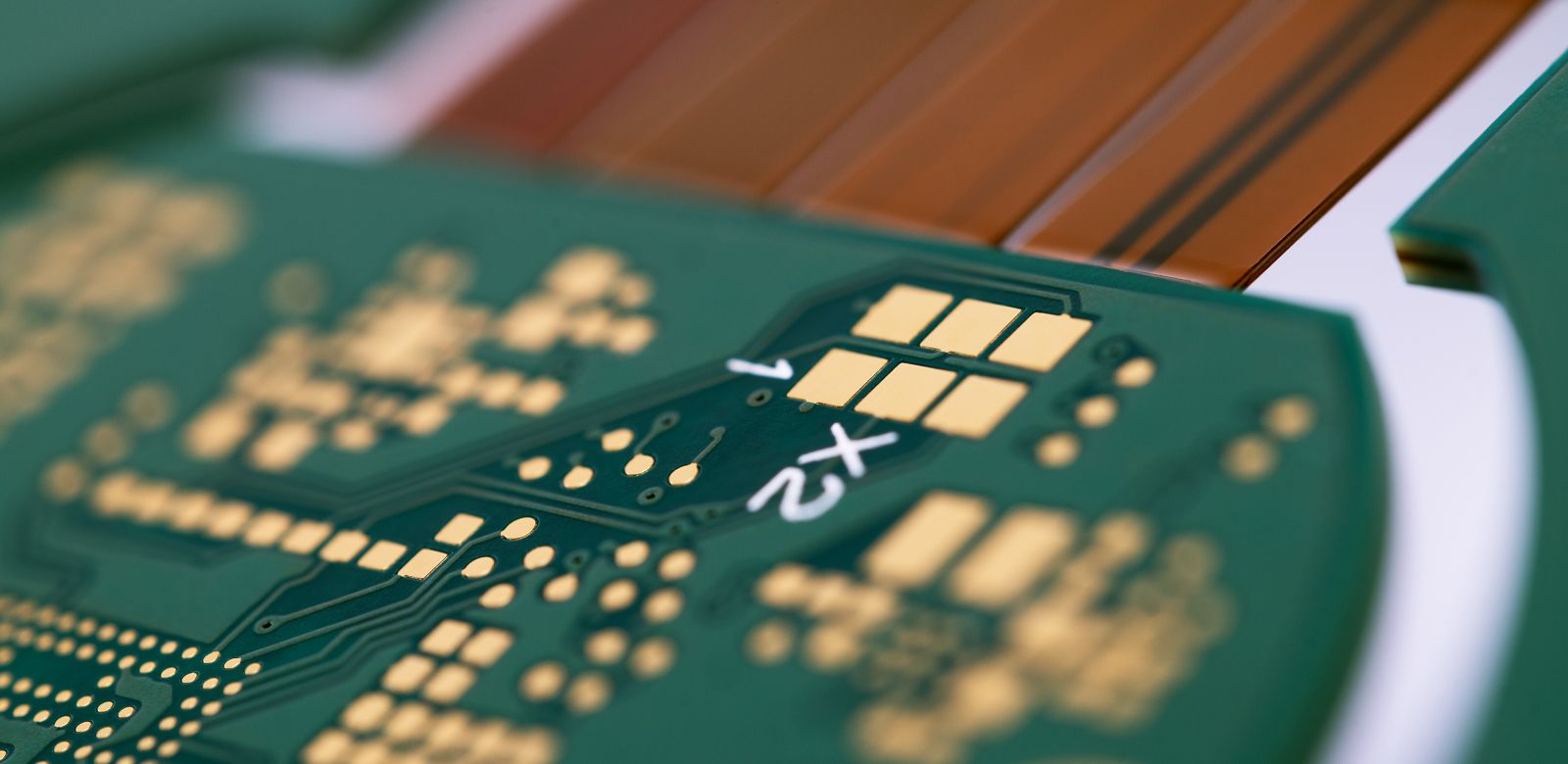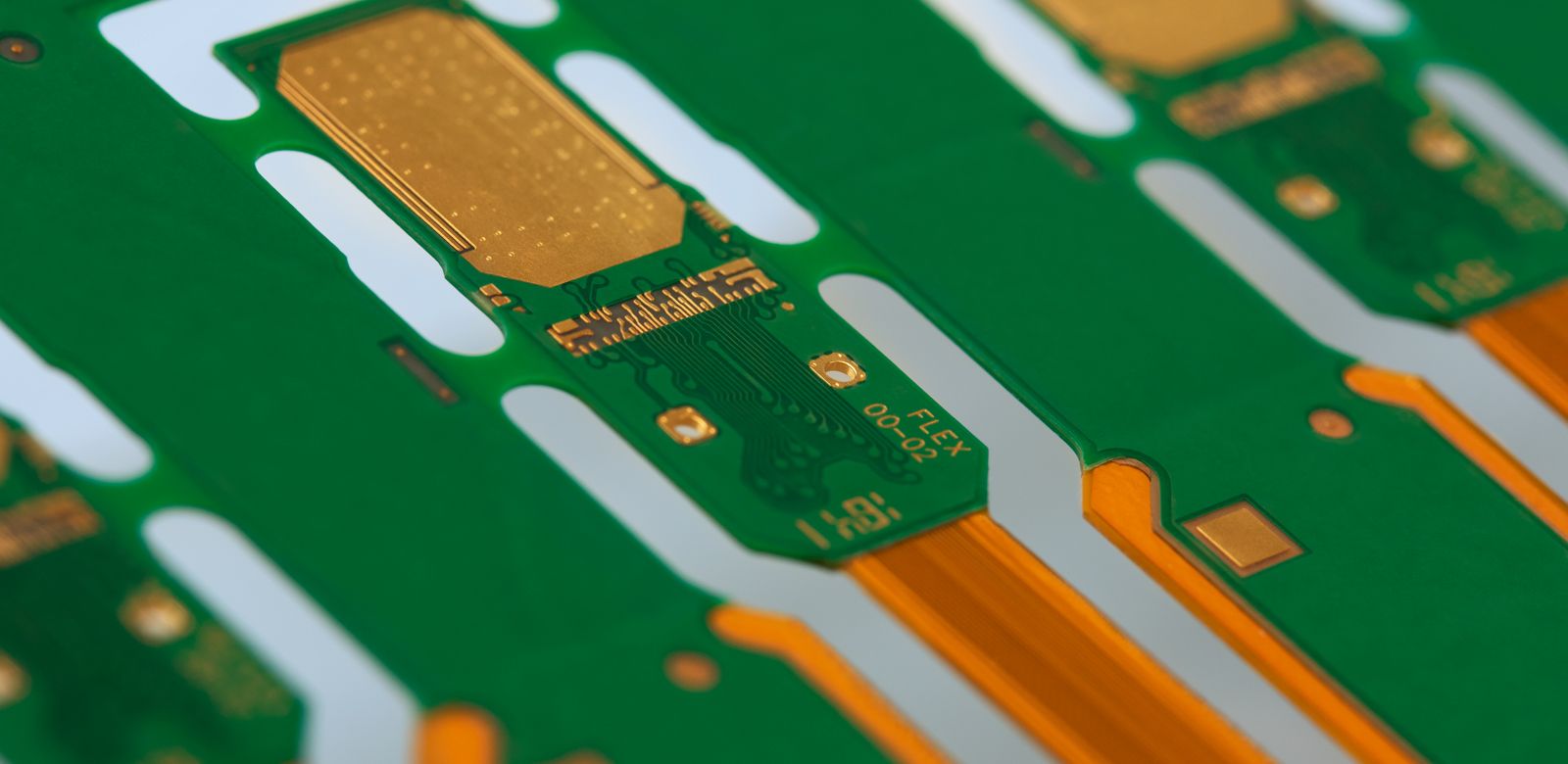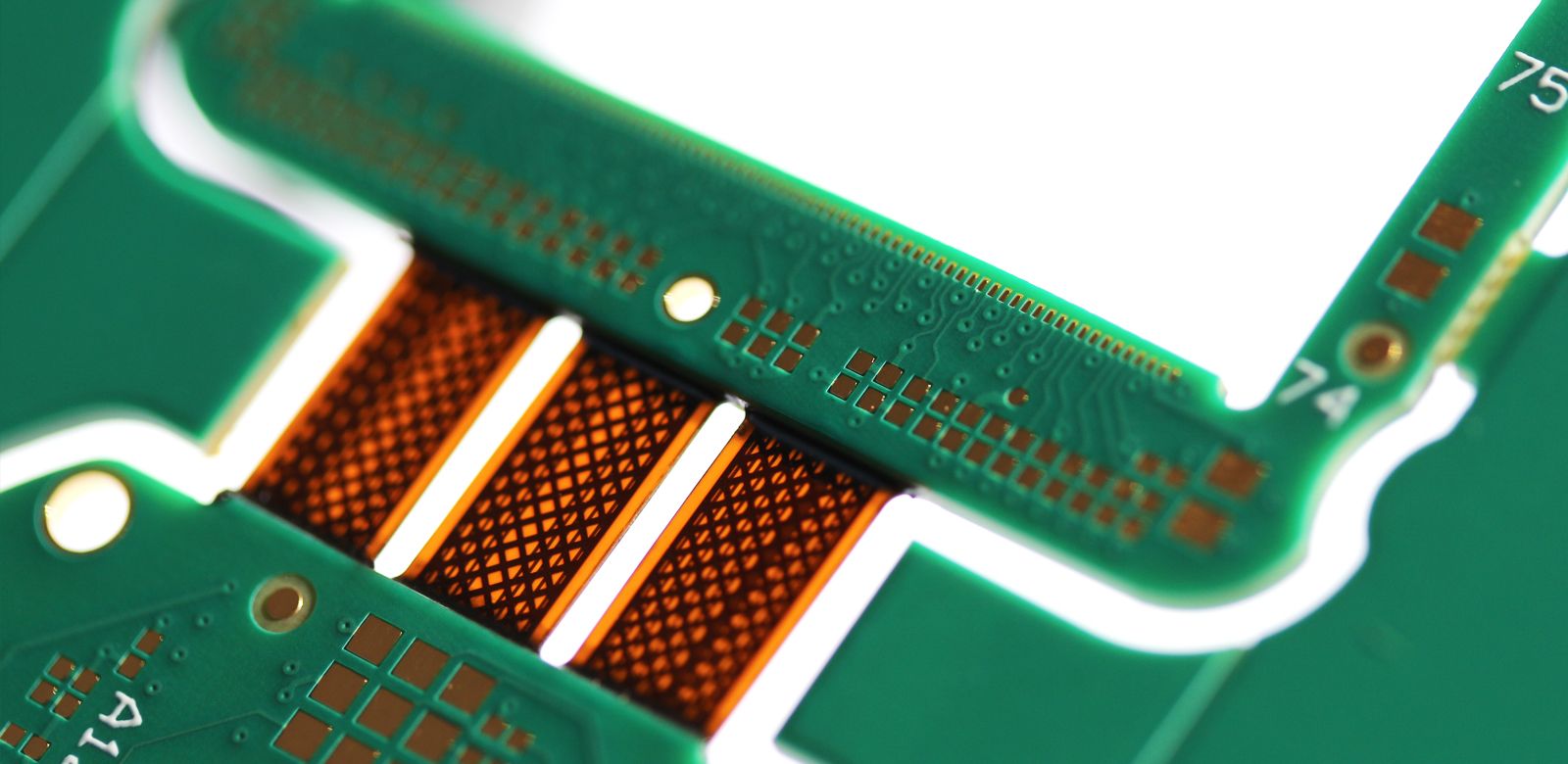Rigid-flexible PCBs
A blend of rigid and flex emphasizing the best of both constructions, adding synergistic capabilities neither possessess alone.
The rigid areas provide excellent hard mounting points for components, connectors and chassis while flex areas offer dynamic flexing, flex to fit, and component mounting assured to take advantage of these low mass and vibration resistant zones. This blending leads to creative solutions for your most demanding applications with the advantage of improved signal integrity.
The maximum benefit of rigid-flex is realized when the complete installation is reviewed for total cost of ownership. After all using rigid-flex eliminates connections in the flex-to-rigid transitions which can improve reliability and improve impedance control.
Eurotronics and its partner production facility offer an endless variety of rigid-flex PCB constructions, however early involvement in the design stage of your rigid-flex PCB is crucial. Eurotronics supports its customers during the Design for Manufacturing (DfM) traject and offers the right selection of base materials and state-of-the-art production methodes to maximize performance and durability with the most cost effective advantages.

- Up to 20 layers rigid – 8 layers flex (development)
- High-quality base materials, like High-Tg, low CTE FR4, combined with adhesive-less polyimide films and no-flow pre-pregs
- Laser routing tolerance down to +/-50µm
- HDI / ELIC technologies integrated
- Bookbinder & window technology to achieve a high degree of flexibility
- Strain reliefs
- Several types of stiffeners
- A large portfolio of surface finishings
For a double sided flex, the circuit thickness is approximately 150µm. Sharper, permanent bends are common for static bend-to-install applications of single layer circuits. Dynamic applications require special considerations.
- Double-layer: 12 × circuit thickness (minimum)
- Multilayer: 24 × circuit thickness (minimum)
- An air gap or bookbinder technology can be used to increase flexibility of multiple flex layers
As rigid-flex circuits often require more complex assembly methods, adhesive-less type of flexible copper clad laminates are highly recommended as these laminates are less hygroscopic and thus reduce the risk of delamination during assembly.


